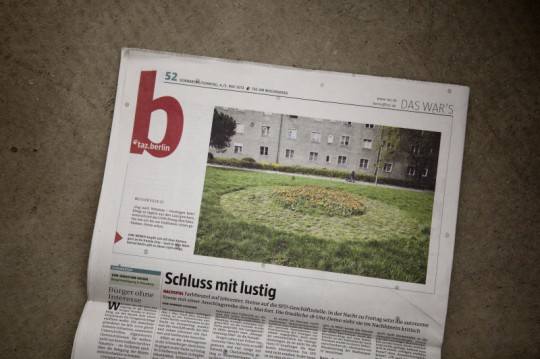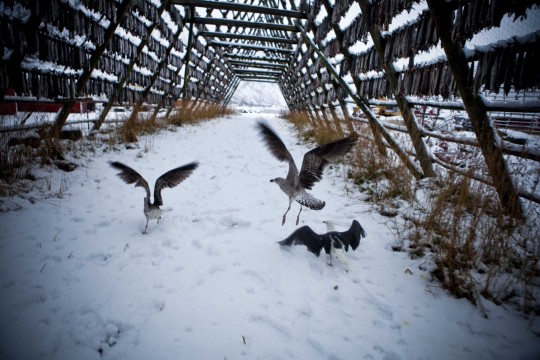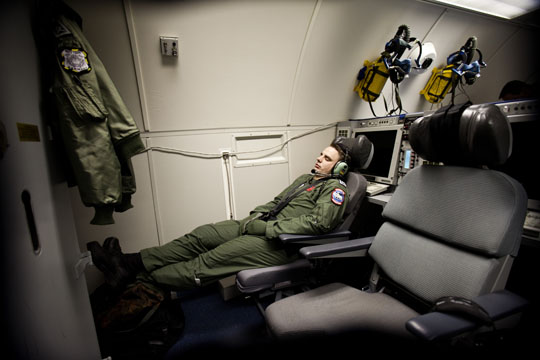Publication in GQ
Back in September Lene photographed refugees in Berlin-Mitte for the reportage section of GQ Germany.




Back in September Lene photographed refugees in Berlin-Mitte for the reportage section of GQ Germany.




Just recently Lene was assigned by stern to shoot a picture of the Tropical Islands Resort near Berlin. As she has been taking pictures there back in 2007, it was quite exciting for her to return to this artificial world and see whether it has changed or not.

And here is the spread, that stern ran in early october 2015.

Every saturday in may I will shoot one picture under the title »white spot« for the photo column that is published in the Berlin part of the daily newspaper »taz«.

Do you see the raindrops? It just started to rain when I was taking repros… damn!
Here some random portraits from the last weeks mainly shot for De Volkskrant.
>








For the german daily »Frankfurter Allgemeine Zeitung« (FAZ) i spent one day with the german rock band »The Beatsteaks«. I was just heading to another job as the editor called me saying it was cancelled and i should portray the Beatsteaks instead. I had seen the band performing at the Hurricane festival a couple of years ago but i could neither remember how many of them stood on stage nor in which language they sang.
I thought of crazy, wild rock n‘ roll life. I pictured myself right in it.
The Beatsteaks didn’t fit in that cliche. Instead of Jack Daniels, loud music and hot groupies i found very clean tour buses, friends of the band members cooking delicious food and no liquor. The writer and i did an interview with Torsten Scholz, the bands bass player, a couple of hours before the gig. He was a very relaxed and sympathetic guy from berlin with some pretty colorful tattoos on his arms. After that the writer left and i stayed with the band until after the show. The only thing that fit into the rockstar life i expected was their manager taking care that the journalists wouldn’t harass the band members too much.
It has been a very interesting day.













End of last year, I travelled to Australia for a story about the »Seashepherd conservation society«. Every year the group of marine and wildlife activists launches a huge campain to the Antarctica to chase the Japanese Whaling-fleet. This year the campain contained 3 vessels: The »Steve Irwin«, the »Bob Barker« and their new top gun, the stealth boat »Gojira«. Their big goal was to detain the Japanese fleet from killing any whales throughout the hunting-season. The campain usually takes about 3 months and was lounged for the 7th time. From the perspective of the Sea Shepherds, this year’s campain was a big success, as after a few days of chasing the »Nisshin Maru« factory ship, the Japanese returned home. With this retreat, the Japanese officially ended the 2011 hunting season in the southern ocean. After information of the Sea Shepherds, the whaler’s didn’t even take 10% of their quota. Anyways, I think at the moment the Japanese have much bigger problems to deal with!
Together with a college I travelled to Hobart on Tasmania, to cover the campaines preparation and to interview the founder of the society, Captain Paul Watson.
In the February issue of the German travel magazine »Geosaison« you can find a story about Perpignan in south-east France, shot by Florian and Julius. Late summer of last year, they spend a couple of days down there to photograph their first job for the well known magazine. Have a look!






A few weeks ago, I’ve been on assignment in northern Norway. Together with a writing college, we flew from Amsterdam via Oslo and Bodø to Narvik.Narvik is a small town, which can be seen as the getaway to the islands of the Lofoten. From here we boarded an old Fishing boat, and started our trip towards the islands.
The next days, we basically cruised around to find the Orkas, unfortunately without any success…!
We later found out, that we were not just unlucky…. Until a few years ago, huge numbers of Orkas were visiting the sheltered waters around the islands regularly to feed on there main pray, the Herring. At this time the chance to meet them was almost hundred percent.
But in the last decade, the commercial fishing industry targeted the Herring heavily. Within a few years the population around the Lofoten was almost exterminated, and with the overfishing and the disappearance of the Herring, the Orcas also didn’t come back.
»They are still there«, explains our captain, »Somewhere far out on the ocean, they are looking for Herring.«
For our story, this fact was a little challenging. A reportage about whale watching without seeing any whale, doesn’t appear very authentic! So my college changed the story a little bit and wrote about the facts of the disappearance of the whales as well as the flair on the old fishing boat and the pure beauty of the Lofoten at wintertime. I provided the photos.
Around two weeks ago the story was published as the opening-story for the weekly travel section of the Volkskrant.










I did it for Frankfurter Allgemeine Zeitung.
The Airborne Early Warning and Control System (AWACS) under NATO command is supplying aerial surveillance to NATO Headquarters. It has a base at Geilenkirchen/North Rhine-Westphalia.
That’s what it said in my assignement. I was told to be at the base at 7 a.m. to accompany one of their surveillance flights. That’s how I ended up flying to sicily and return without even having touched the ground.
The planes they are using remain from the time when germans still believed in the »evil-russian«. They are also used for major events such as World Cups. The engines on the planes are not being used in civilian air transportation because they’re too noisy and burn too much kerosene.
It felt a bit like being in a flying military museum. The technology is able to spot 400 planes in a circumcircle of 350 km. Regardless of the weather and the nature of the ground, because the high flying ferret aircrafts can look behind mountains which radar devices on the ground can not.
AWACS is an early warning system but it can also be used for purposes of attack. Such a machine can guide pursuit planes and missiles and spot defense installations from a save distance. One plane costs about 110 million euros, at Geilenkirchen there are based 16 of them.













A while ago I got the assignment to photograph at a slaughterhouse for horses. In fact there are too many private held horses in the Netherlands, so people are trying to sell them on the Internet. This, in many cases doesn’t work because there is just no need for these high number of animals. Especially when the horses suffer from something that impacts there function as a sport horse in a negative manner.
I photographed at a slaughterhouse before, but I was still excited when I got on this assignment. Anyhow there is a difference between seeing a pig rather than a horse dieing. It is probably because today a horse is nothing more than a pet for us. There is no longer any economical need for dobbins or working horses like a 100 years ago. Next to that horses do not get reared to feed the human race like pigs or cattle do.
But I also think, if you eat meat, you should be aware of where it is coming from. At least we should keep in mind, that the in plastic wrapped peace of meat in the supermarket was an animal before.
Anyways, I spend some hours photographing the slaughters following their work. This is how it looks:
Julius just moved to Amsterdam to start his job for the daily Dutch newspaper »De Volkskrant«. The paper, which is one of the biggest in the country, distinguishes itself through a high standard of photo-quality.
From now on Julius will be working for at least 6 month as an affiliated photographer for the paper.
You can reach him on his German phone as usual or on his new Dutch number:
German: +49.151.15 54 77 47
Dutch: +31.685.10 02 72

In the beginning of january I travelled to Romania for the german newspaper »Frankfurter Allgemeine Sonntagszeitung«. My collegue Phillip Eppelsheim and I went there to cover another story, but we got a couple of extra days to look around. Maramures, the region where we have been, borders the Ukraine and is one of the poorest and most remote places in the EU. In the city of Viseu de Sus we found gipsy families collecting plastic bottles and metal at the cities dump. We were surprised to see that, because we didn’t know that this poverty is still existing in Europe. We spent two days with these people on the dump. Toxic gas was flowing in the air and one sank knee deep into the garbage. The gypsies get five euro cent per kilo of plastic bottles so they generate an income of about three euros per day. The harassment of gipsies is a common issue in Eastern Europe. The people working on the dump don’t get paid welfare even though they’re entitled to it and most of their children don’t go to school for long. People working on the dump don’t become that old. Almost everybody has liver problems from breathing toxic gases and the chances that one injures himself by grasping into glas, or even worse, injection needles from a nearby hospital, are pretty high.
It’s a bad situation that’s going on down there and it shouldn’t exist in the EU.
I just did an assignment for the danish newspaper Fyens Stiftstidende. The picture editor of this danish newspaper was my second examiner during my bachelor exam in Århus and remembered me, when he was looking for a photojournalist in Germany who could do the job.
The story was about Lars from Denmark, who came to Germany to get a special cancer treatment, that is not administered in his own country. The immune therapy in combination with the Local Hyperthermia is his last hope, but the doctor said, that »he was probably coming too late«. But Lars, who already overcame another tumor, just before the new one was diagnosted, is a strong personality, who doesn’t stop to fight for his life.
The story about Lars, was published on january 24th in the sunday supplement »Fokus« of the daily newspaper Fyens Stiftstidende.